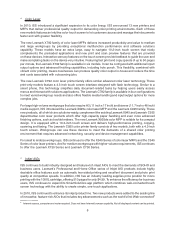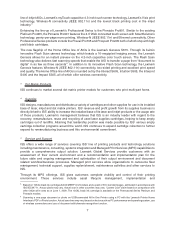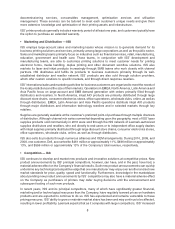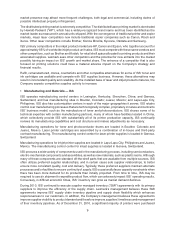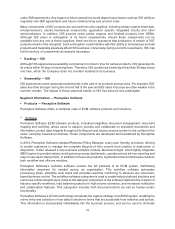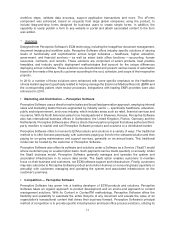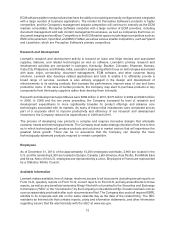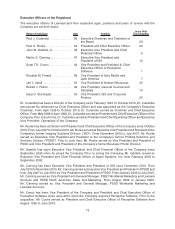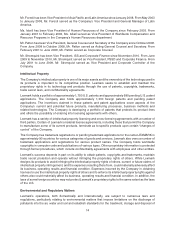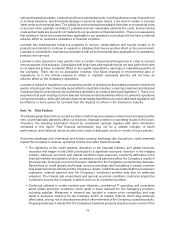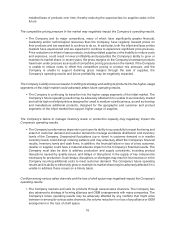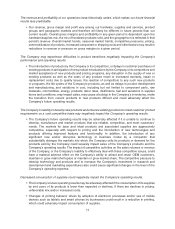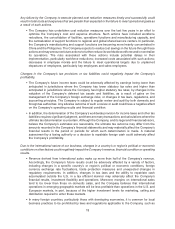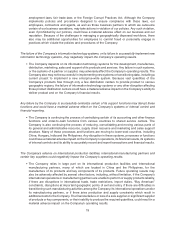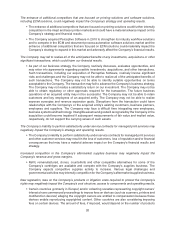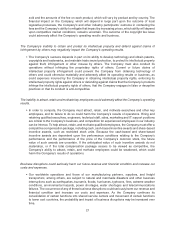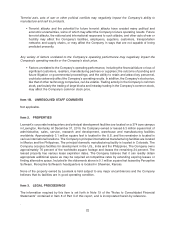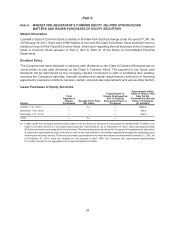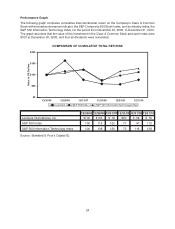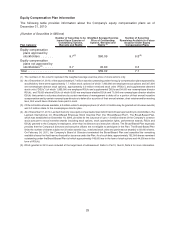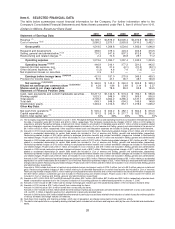Lexmark 2010 Annual Report Download - page 22
Download and view the complete annual report
Please find page 22 of the 2010 Lexmark annual report below. You can navigate through the pages in the report by either clicking on the pages listed below, or by using the keyword search tool below to find specific information within the annual report.installed base of products over time, thereby reducing the opportunities for supplies sales in the
future.
The competitive pricing pressure in the market may negatively impact the Company’s operating results.
• The Company and its major competitors, many of which have significantly greater financial,
marketing and/or technological resources than the Company, have regularly lowered prices on
their products and are expected to continue to do so. In particular, both the inkjet and laser printer
markets have experienced and are expected to continue to experience significant price pressure.
Price reductions on inkjet or laser products, including related supplies or the inability to reduce costs
and expenses, could result in lower profitability and jeopardize the Company’s ability to grow or
maintain its market share. In recent years, the gross margins on the Company’s hardware products
have been under pressure as a result of competitive pricing pressures in the market. If the Company
is unable to reduce costs to offset this competitive pricing or product mix pressure, and the
Company is unable to support declining gross margins through the sale of supplies, the
Company’s operating results and future profitability may be negatively impacted.
The Company’s ability to be successful in shifting its strategy and selling its products into the higher-usage
segments of the inkjet market could adversely affect future operating results.
• The Company is continuing its transition into the higher-usage segments of the inkjet market. The
Company’s future operating results may be adversely affected if it is unable to successfully market
and sell its high-end inkjet printers designed for small to medium-sized business, as well as develop
and manufacture additional products, designed for the geographic and customer and product
segments of the inkjet market that support higher usage of supplies.
The Company’s failure to manage inventory levels or production capacity may negatively impact the
Company’s operating results.
• The Company’s performance depends in part upon its ability to successfully forecast the timing and
extent of customer demand and reseller demand to manage worldwide distribution and inventory
levels of the Company. Unexpected fluctuations (up or down) in customer demand or in reseller
inventory levels could disrupt ordering patterns and may adversely affect the Company’s financial
results, inventory levels and cash flows. In addition, the financial failure or loss of a key customer,
reseller or supplier could have a material adverse impact on the Company’s financial results. The
Company must also be able to address production and supply constraints, including product
disruptions caused by quality issues, and delays or disruptions in the supply of key components
necessary for production. Such delays, disruptions or shortages may result in lost revenue or in the
Company incurring additional costs to meet customer demand. The Company’s future operating
results and its ability to effectively grow or maintain its market share may be adversely affected if it is
unable to address these issues on a timely basis.
Conflicts among various sales channels and the loss of shelf space may negatively impact the Company’s
operating results.
• The Company markets and sells its products through several sales channels. The Company has
also advanced a strategy of forming alliances and OEM arrangements with many companies. The
Company’s future operating results may be adversely affected by any conflicts that might arise
between or among its various sales channels, the volume reduction in or loss of any alliance or OEM
arrangement or the loss of shelf space.
16


